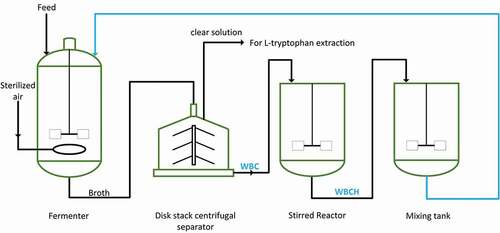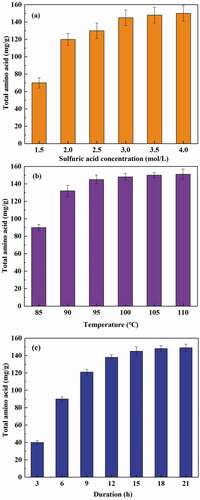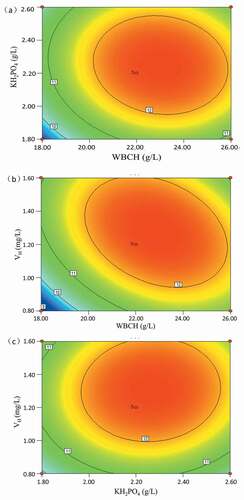Figures & data
Figure 1. Preparation and utilization of WBCH. WBC refers to waste bacterial cell recovered by centrifugation. WBCH refers to waste bacterial hydrolysate produced by acid hydrolysis.

Table 1. Experimental design for screening of variables using the Plackett-Burman method.
Table 2. Experimental results of the path of steepest ascent.
Table 3. Optimization of the medium components for improving the L-tryptophan yield using Box-Benhnken design.
Figure 2. Effect of sulfuric acid concentration (a), temperature (b), and reaction duration (c) on WBC hydrolysis. The total amino acid yield is the mass ratio of extracted total amino acid to dry WBC.

Table 4. Comparison of amino acids in YE, WBC extract, and WBCH.
Table 5. F-test and significance levels calculated from Plackett-Burman experiments.
Table 6. Variance analysis of regression equation of Box-Benhnken design.
Figure 3. Combined effect of (a) WBCH and KH2PO4 concentration; (b) WBCH and VH concentration; (c) KH2PO4 and VH concentration on L-tryptophan production.

Figure 4. Time courses of (a) biomass formation; (b) specific growth rate; (c) L-tryptophan titer; and (d) L-tryptophan production rate by E. coli using WBCH medium and YE medium.

Table 7. Calculation of production cost of WBCH.
